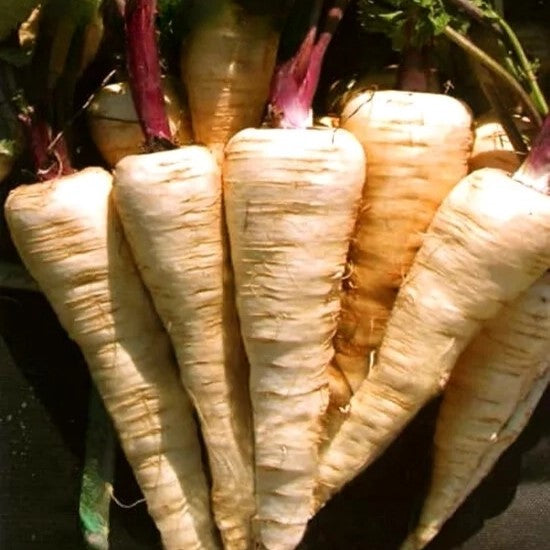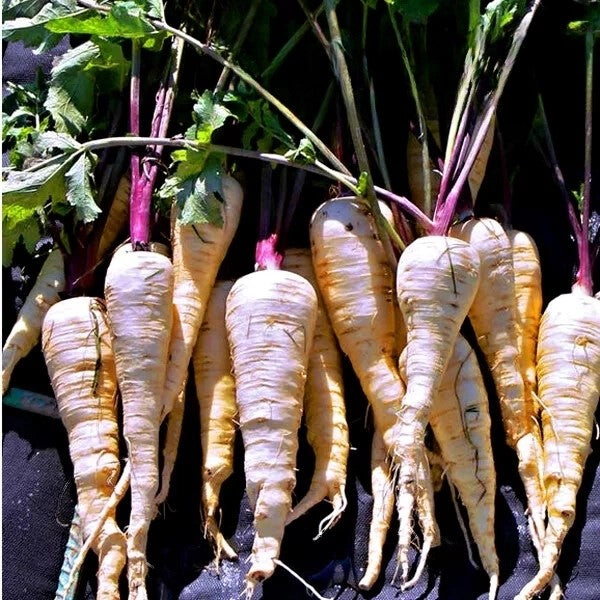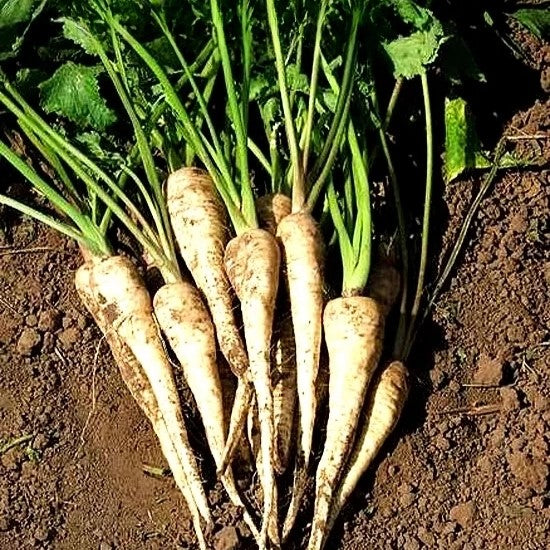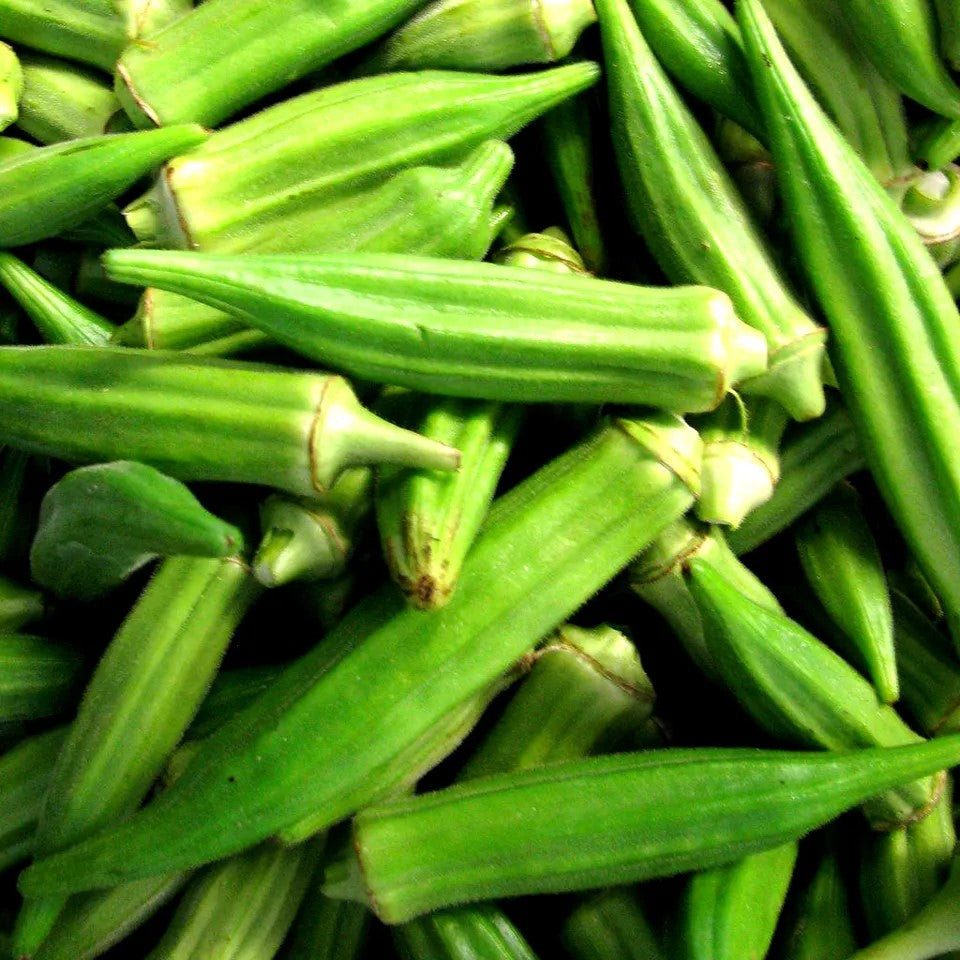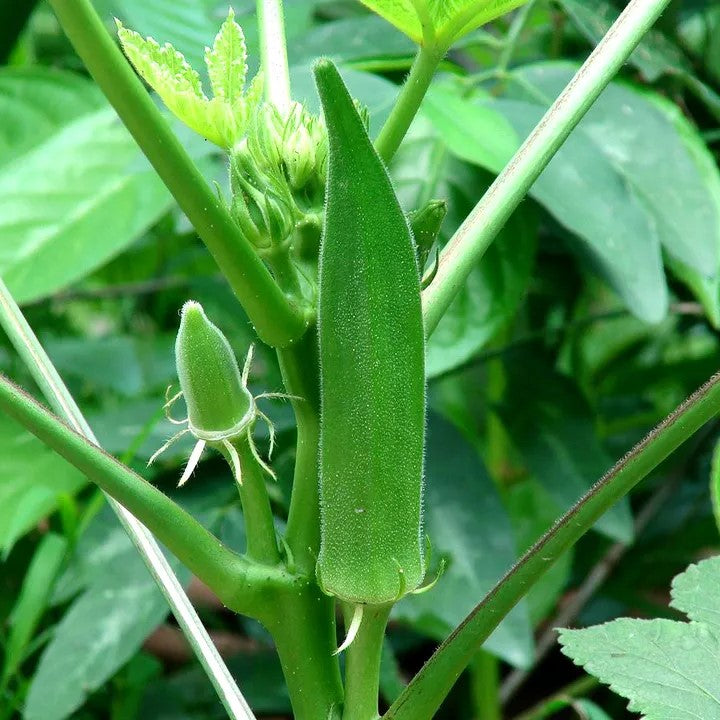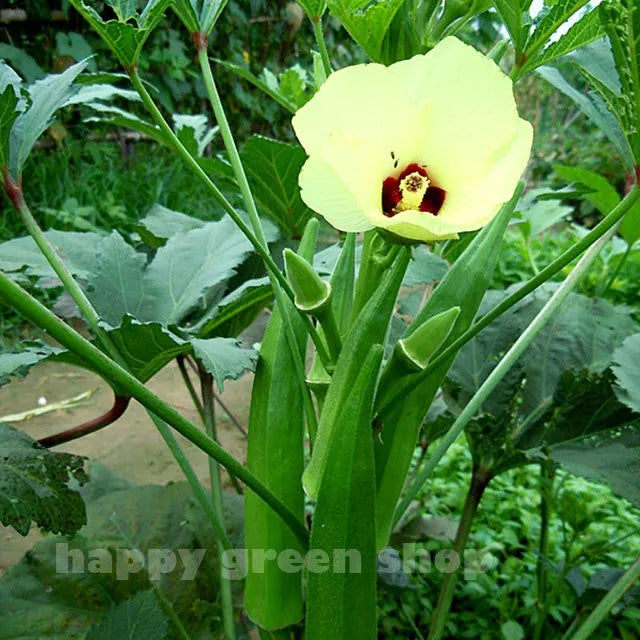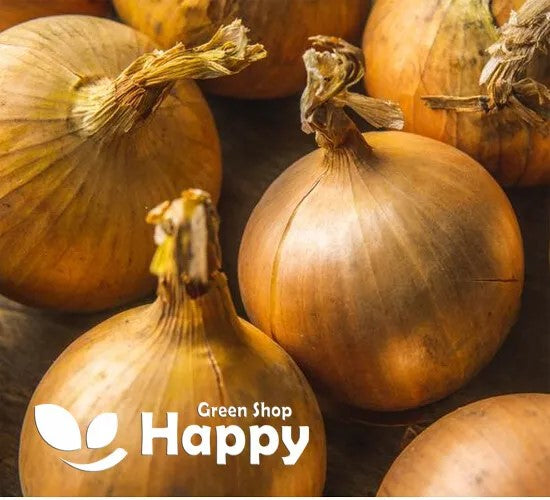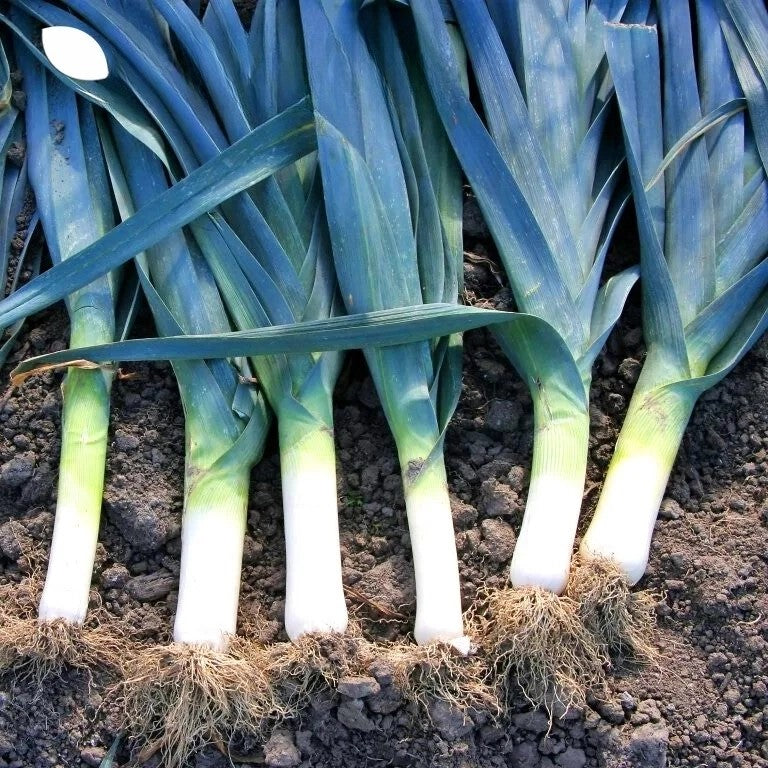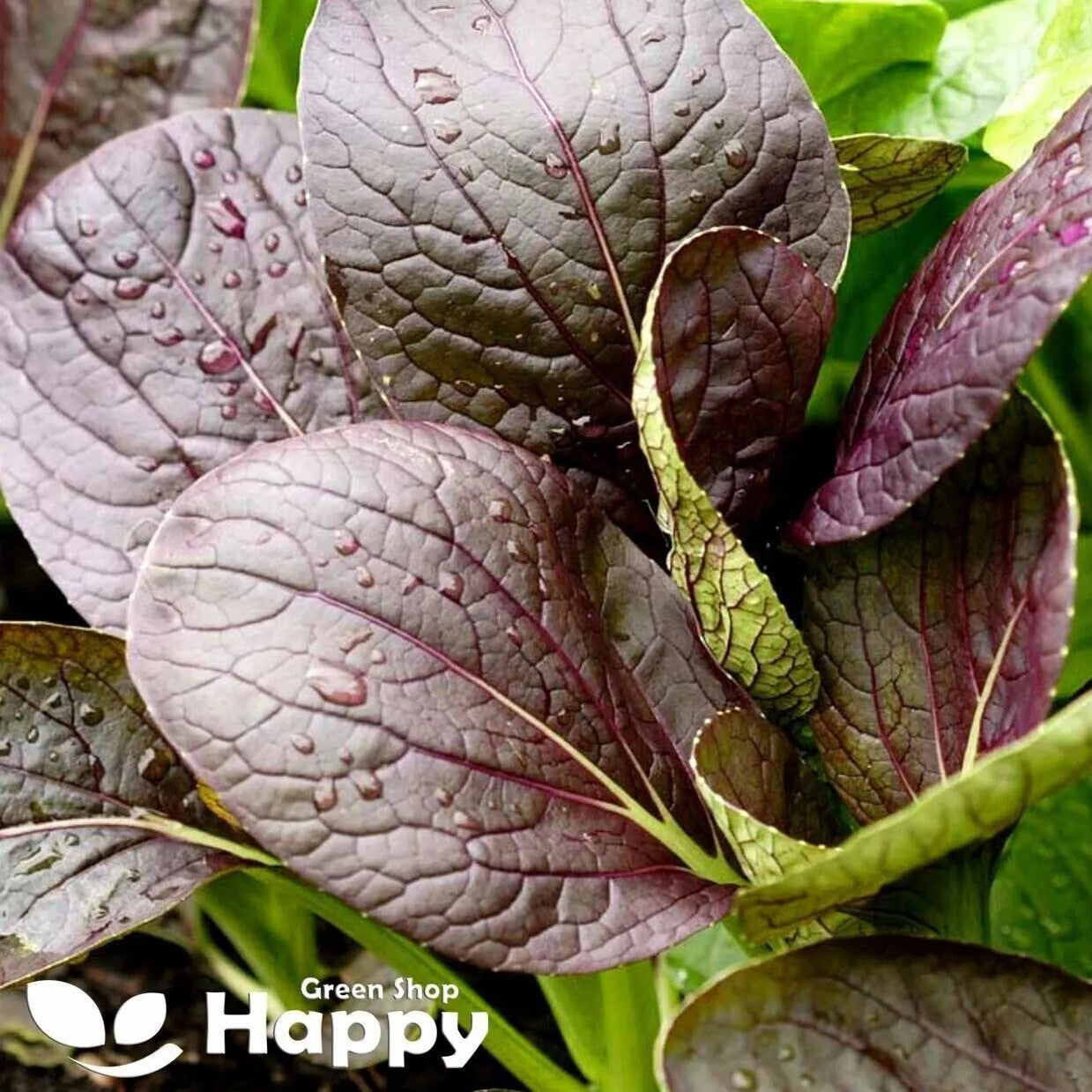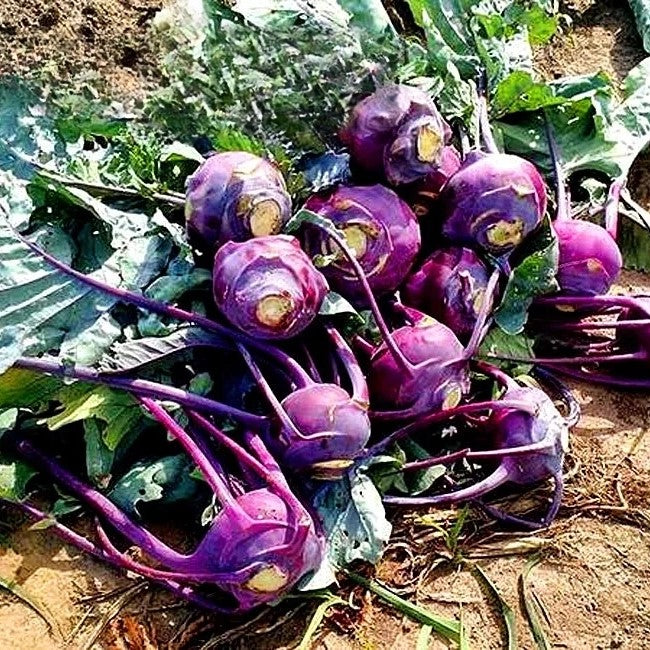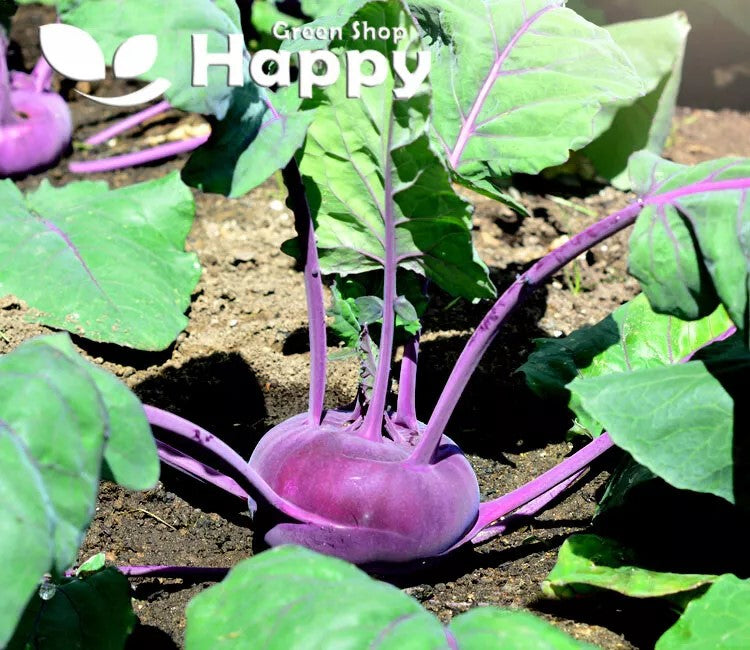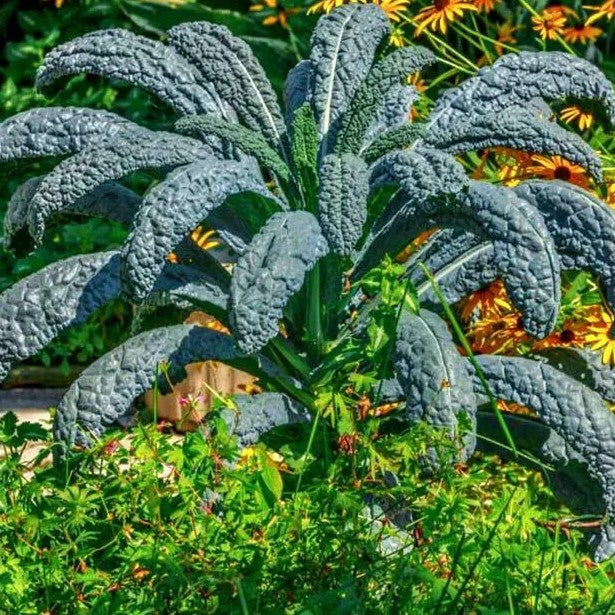Sort by:
47 products
47 products
Parsnip Root 'Kamo' – Seeds
(Pastinaca sativa) – Sweet, Nutritious Root Vegetable
Parsnip 'Kamo' is a reliable, high-yielding variety producing long, smooth, tapered roots with creamy-white skin and sweet, nutty flavor. Its roots become even sweeter after the first frosts, making it a classic for autumn and winter harvests. Excellent for roasting, mashing, soups, and stews, parsnips are rich in vitamins, minerals, and dietary fiber.
Key Features
-
Type: Hardy biennial grown as annual root crop
-
Root size: Long, tapered, smooth
-
Flavor: Sweet, nutty – improves after frost
-
Harvest: Late autumn to winter
-
Use: Roasting, mashing, soups, stews
Ideal For
-
Traditional vegetable gardens
-
Winter kitchen harvests
-
Nutrient-rich root storage
-
Roasting & hearty seasonal dishes
Sowing & Growing
-
Sow outdoors: March–May, directly into prepared seed beds.
-
Depth: 1 cm, in rows 30–40 cm apart.
-
Germination: 14–28 days at 8–18°C.
-
Thinning: 10–15 cm between plants.
-
Soil: Deep, loose, stone-free, fertile soil.
-
Harvest: October–February (roots store in the ground).
Care Tips
-
Do not sow in freshly manured soil (may cause forking).
-
Slow to germinate – keep soil consistently moist.
-
Leave roots in the ground over winter for best flavor.
Parsley Hamburg 'Alba' – Seeds (Petroselinum crispum)
Parsley Hamburg 'Alba' is a dual-purpose variety grown both for its large, white, parsnip-like roots and its flavorful parsley leaves. The roots are excellent roasted, boiled, or grated raw into salads, while the leaves can be used fresh as a garnish or in cooking. A versatile and easy-to-grow addition to the kitchen garden.
How to Grow
-
Sow outdoors: March – July, directly into well-prepared soil.
-
Thin seedlings to 15 cm apart in rows 30 cm apart.
-
Prefers fertile, light, well-drained soil.
-
Water regularly for strong root development.
Key Features
-
Root parsley variety with sweet, nutty flavor
-
Dual-purpose: edible roots & aromatic leaves
-
Easy to grow and hardy in most soils
-
Stores well after harvest
-
Great for soups, stews, roasting, and garnishing
Ideal For
-
Root vegetable dishes
-
Fresh parsley leaves for cooking
-
Kitchen gardens and allotments
Sowing & Harvest
-
Sow: March – July
-
Harvest: October – December
Quick Tip
For the best roots, loosen soil well before sowing to allow long, straight growth.
Onion Tosca – 80 Seeds (Allium cepa)
Description:
Grow flavorful, versatile onions with Onion Tosca (Allium cepa). This high-quality variety produces medium-sized, firm bulbs with a mild, slightly sweet taste. Ideal for salads, cooking, and pickling, Tosca onions are easy to grow from seed and suitable for kitchen gardens, raised beds, and allotments. Resistant to common diseases, they offer reliable harvests throughout the season.
Key Features
-
Medium-sized, firm bulbs with mild, sweet flavor
-
Suitable for salads, cooking, and pickling
-
Disease-resistant and reliable variety
-
Easy to grow from seed
-
Ideal for home and small-scale gardens
Ideal For
-
Kitchen gardens and raised beds
-
Culinary use: raw, cooked, or pickled
-
Allotments and small vegetable plots
-
Home gardeners seeking reliable onions
Sowing & Growing
-
Sow Indoors: February–March
-
Transplant Outdoors: April–May, after frost
-
Germination: 10–14 days at 15–20°C
-
Spacing: 10–15 cm apart in rows 25–30 cm apart
-
Height: 30–40 cm
-
Light: Full sun
-
Soil: Fertile, well-drained, rich in organic matter
Care Tips
-
Water regularly but avoid waterlogging
-
Thin seedlings to prevent overcrowding
-
Fertilize lightly during growth
-
Harvest when bulbs are firm and tops begin to yellow
Okra 'Clemson Spineless' – Seeds (Abelmoschus esculentus)
Okra 'Clemson Spineless' is the most popular and widely grown okra variety, prized for its tender, spineless green pods and high yields. A warm-season crop, it thrives in sunny conditions and produces long, slim pods that are perfect for frying, grilling, soups, curries, and traditional gumbo dishes. Compact and productive, it’s ideal for home gardens or allotments.
How to Grow
-
Sow indoors: March – May in pots or modules with heat.
-
Transplant outdoors: After last frost when soil has warmed.
-
Soil: Fertile, well-drained soil in full sun.
-
Spacing: 30–45 cm apart.
-
Water regularly during dry spells to encourage pod production.
Key Features
-
Famous spineless okra variety
-
High-yielding and fast-growing
-
Tender, slim pods with rich flavor
-
Heat-loving annual for summer harvests
-
Perfect for gumbo, curries, soups, and frying
Ideal For
-
Kitchen gardens and allotments
-
Sunny, sheltered growing positions
-
Gardeners who enjoy exotic vegetables
Sowing & Harvest
-
Sow: March – May
-
Harvest: July – October
Quick Tip
Harvest pods when young (7–10 cm long) for the best flavor and tenderness. Picking regularly encourages further production.
Onion 'Spanish Sun' Seeds (Allium cepa)
Bring sunshine to your garden with Onion 'Spanish Sun', a reliable, early-maturing variety that produces large, globe-shaped golden bulbs. Known for its mild, sweet flavor and crisp texture, it’s perfect for fresh salads, cooking, or storing. Easy to grow and versatile in the kitchen, this onion is a must-have for every vegetable garden.
How to Grow
-
Sow indoors from January to March or directly outdoors from March to April.
-
Prefers fertile, well-drained soil in full sun.
-
Sow seeds 1 cm deep in rows 30 cm apart.
-
Thin seedlings to 10 cm spacing for full-sized bulbs.
-
Keep soil moist but not waterlogged.
Key Features
-
Early-maturing, large golden bulbs
-
Mild, sweet flavor with crisp texture
-
Suitable for fresh use, cooking, or storing
-
Reliable variety for consistent yields
-
Easy to grow in most garden soils
Ideal For
-
Home gardeners and allotments
-
Fresh salads, soups, and everyday cooking
-
Long-term storage after harvest
-
Gardeners seeking early, high-quality onions
Sowing
-
Best time: Indoors January–March, outdoors March–April
-
Depth: 1 cm
-
Spacing: 10 cm between plants, 30 cm between rows
-
Position: Full sun, well-drained fertile soil
-
Harvest: August to September
Quick Tip
-
Allow bulbs to fully dry in the sun before storing to extend their shelf life.
Leek ‘Titus’ – 800 Seeds (Allium porrum)
Description:
Grow tender, flavorful leeks with Leek ‘Titus’ (Allium porrum). This hardy variety produces long, thick, light-green stems with a mild onion-like flavor, ideal for soups, stews, and roasting. ‘Titus’ is resistant to bolting and can be sown early for spring or autumn harvests. Perfect for kitchen gardens, raised beds, or allotments, it’s an easy-to-grow variety suitable for both home gardeners and small-scale growers.
Key Features
-
Long, thick, mild-flavored stems
-
Hardy variety resistant to bolting
-
Suitable for early spring and autumn harvest
-
Ideal for culinary use: soups, stews, roasting
-
Easy to grow from seed
Ideal For
-
Kitchen gardens and allotments
-
Raised beds and vegetable borders
-
Culinary use in soups, stews, and roasted dishes
-
Home gardeners seeking reliable leek harvests
Sowing & Growing
-
Sow Indoors: January–March
-
Transplant Outdoors: March–May
-
Germination: 10–14 days at 15–20°C
-
Spacing: 10–15 cm apart in rows 30–40 cm apart
-
Height: 40–50 cm
-
Light: Full sun
-
Soil: Fertile, well-drained, rich in organic matter
Care Tips
-
Water regularly, especially during dry periods
-
Hill soil around stems to blanch and promote tender growth
-
Fertilize lightly with balanced fertilizer during growth
-
Harvest when stems reach desired thickness
Komatsuna Red Spinach Seeds (Periviridis)
Bring bold color and exceptional nutrition to your garden with Komatsuna Red Spinach, also known as Japanese mustard spinach. This hardy leafy green features striking red-purple leaves with a mild, slightly mustardy flavor. A versatile and fast-growing crop, it thrives in both cool and warm conditions, making it perfect for year-round sowing. Delicious in salads, stir-fries, and soups, it’s a nutrient-packed choice for any kitchen garden.
How to Grow
-
Sow directly outdoors from spring to autumn or under cover in winter.
-
Prefers fertile, well-drained soil in full sun or partial shade.
-
Sow seeds thinly 1 cm deep in rows 30 cm apart.
-
Thin seedlings to 15–20 cm spacing for full-sized plants.
-
Harvest young leaves in 25–30 days or mature leaves in 40–50 days.
Key Features
-
Fast-growing, cut-and-come-again leafy green
-
Beautiful red-purple leaves with mild mustard flavor
-
High in vitamins A, C, and calcium
-
Tolerates both heat and cold for extended cropping
-
Suitable for salads, stir-fries, soups, and juicing
Ideal For
-
Year-round vegetable growing
-
Nutrient-rich kitchen gardens
-
Gardeners who enjoy fast, repeat harvests
-
Adding color and flavor to fresh dishes
Sowing
-
Best time: March to October (under cover for winter)
-
Depth: 1 cm
-
Spacing: 15–20 cm between plants
-
Position: Full sun or partial shade
-
Harvest: From 25 days after sowing
Quick Tip
-
Pick leaves regularly to encourage new growth and enjoy tender, flavorful harvests throughout the season.
Kohlrabi 'Violeta' – Seeds (Brassica oleracea)
Kohlrabi 'Violeta' is a striking purple-skinned variety with crisp, white flesh and a sweet, nutty taste. Its unique color and mild flavor make it an excellent addition to both the garden and the kitchen. Perfect eaten raw in salads, grated into slaws, or lightly cooked in stir-fries, soups, and roasts.
This fast-growing crop is hardy, reliable, and suitable for multiple sowings throughout the season. Compact plants make it an ideal choice for small gardens, raised beds, or containers.
How to Grow
-
Sow indoors/outdoors: March – July
-
Depth: 1 cm
-
Spacing: 20–25 cm between plants, 30 cm between rows
-
Position: Full sun or partial shade
-
Soil: Moist, fertile, well-drained soil
-
Watering: Keep soil evenly moist to prevent woodiness and splitting
Key Features
-
Vibrant purple variety with sweet, crisp white flesh
-
Delicious raw or cooked – versatile in salads, stir-fries, and roasts
-
Fast-growing and suitable for repeat sowings
-
Compact plants – ideal for small gardens and containers
-
Attractive crop with ornamental value in the vegetable patch
Harvest
-
Harvesting period: May – October
-
Pick when bulbs reach 5–8 cm in diameter for the best flavor and texture.
Short Tip
For tender bulbs, avoid letting plants become oversized – harvest regularly.
Kale Borecole 'Black Tuscan' – Seeds (Nero di Toscana)
Kale Borecole 'Black Tuscan' is a striking, dark-green to almost black leafy kale with deeply wrinkled leaves and a rich, earthy flavor. Also known as Nero di Toscana, this traditional Italian kale is perfect for soups, sautés, salads, and healthy smoothies.
Its hardy, frost-tolerant nature makes it ideal for cool-season gardening, and its dramatic foliage adds both culinary and ornamental value to vegetable beds.
How to Grow
-
Sow indoors: February – April
-
Sow outdoors: March – May
-
Plant spacing: 30–40 cm between plants
-
Position: Full sun to partial shade
-
Soil: Fertile, well-drained soil enriched with compost
-
Care: Water consistently; mulch to retain moisture; remove yellowing leaves to encourage growth
Key Features
-
Deep green, wrinkled leaves with rich, earthy flavor
-
Frost-hardy and suitable for cool-season growing
-
Perfect for soups, sautés, salads, and smoothies
-
Ornamental and culinary value in vegetable gardens
-
High-yielding and easy to cultivate
Harvest
-
Harvesting period: 60–90 days after sowing
-
Pick outer leaves regularly for continuous harvest; leaves improve in flavor after light frost.
Short Tip
Harvest leaves from the bottom up and after a light frost for the sweetest, most tender flavor.
Showing 27/47


